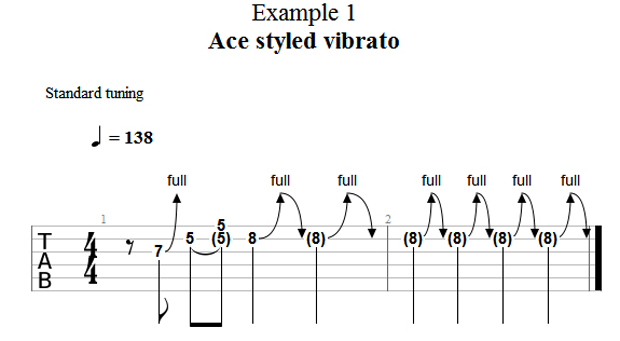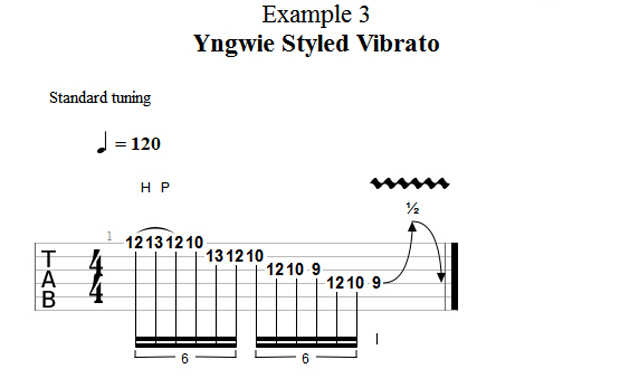How to improve your guitar vibrato
It's never too late to be aware of – and to start fixing – your vibrato, if you feel it could improve

Hello, readers! I'd like to touch on a very important subject. Yet it's often a very overlooked technique to a lot of us guitar players. I'm talking about vibrato!
What is vibrato? It seems like a ridiculous question, but in this blog, I feel there aren't any ridiculous questions. In a nut shell, it's the embellishment of a note by bending up to a pitch and back down to the original pitch in a repeated pattern.
Vibrato seems so simple, yet I feel it is taken for granted by many people. In turn, it is usually something that is never touched on in a practice regimen. The good news is, even if you've been playing for years, it's never too late to be aware of — and to start fixing — your vibrato, if you feel it could improve.
My first taste of vibrato was way back before I even played guitar. I was a kid and, more importantly, a music fan. It was by listening to Kiss and Ace Frehley that I heard these single notes ring out and go up and down. The expression of those notes was one of the coolest things I'd heard at the time.
Fast forward several years later to when I started playing guitar; that "shaking of notes" was one thing I immediately tried to do when I had a guitar in my hands.
I wasn't formally trained on guitar in the beginning, so I relied heavily on my ears, which are pretty good. As I was introduced to more players whose style appealed to me, I wanted to dig deeper into what made them tick and why they played a certain way. Part of that was being aware of their vibrato.
As my playing progressed, I got into other guitar players such as Jimi, Yngwie, Paul Gilbert and Randy Rhoads. Looking back at my influences, I see that my ears leaned torward certain players. They all possesed one thing in common: good vibrato. I made a conscious effort to try and emulate, to a certain point, these players' vibrato, and I tried to remember that feeling I got when I tried to do it in a certain way.
Get The Pick Newsletter
All the latest guitar news, interviews, lessons, reviews, deals and more, direct to your inbox!
Vibrato, to me, is only an inflection of what is going on musically when playing notes, very much like how we speak. There are many different types of vibrato. Just like there are many different accents from different regions of a country. Is one accent right or wrong? Nope. Is one vibrato right or wrong? Nope. Well, some vibrato is more pleasing to the ears than others. But just like all music, it is only a personal preference of what we like.
Let's try to get you more aware of some types of vibrato that might be useful in your playing.
This first example is a similar vibrato to what Ace might do. It's a wider, slower type of vibrato.

The next example is a bit along the style of Randy Rhoads. To me he had a bit of a quicker vibrato.

The third example is an Yngwie-inspired run that ends in a similar vibrato.

Check out the examples in the video below since you really have to hear what I'm talking about!
When working on your vibrato, play around with the timing of the vibrato or the timing of the up-and-down motion of the two notes. An important tip is to make sure the note you're bending to is to pitch. Whole steps, half steps, quarter and eighth steps, etc.
You don't have to limit yourself to our even-tempered system. Try hearing vibrato in Indian music as an example. Pick one of your favorite players and try to emulate their vibrato. Don't worry about being exact to their tone. All of our hands are different, so the tone and feeling isn't going to be exact. Try to recreate the feeling that YOU get. That is a good thing. Embrace your own interpretation because you're on your way to building on your own style.
"Upgrading from your entry-level acoustic opens the door to an entirely new world of tonewoods, body shapes, and brands": 6 signs it's time to upgrade from your first acoustic guitar
"I'm past my prime": 5 common excuses for not learning the guitar – and 5 body and mind-boosting reasons you should









